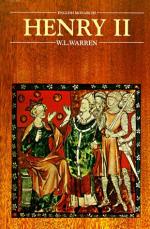Meanwhile the king and his inner council, to which the bishops were now summoned, were busy discussing what must be done. Henry’s position was one of extreme difficulty, suddenly called on as he was to deal with a legacy of difficulties which had been left from the unsettled controversies of a hundred years. By coming to the court in his pontifical dress Thomas had raised a claim that a bishop could only be tried dressed in full pontificals by his fellow-bishops also in full dress. He had thrown aside the king’s jurisdiction by his appeal to Rome; and by his orders to the bishops to judge no further with the barons in this suit he had further violated the “customs” of the realm to which he had himself commanded the bishops to swear obedience at Clarendon. None of the questions raised by Thomas indeed were raised for the first time. William of St. Carileph, when charged by Rufus with treason, had asserted the privilege of a bishop to be tried in pontifical dress, and to be judged only by the canon law in an ecclesiastical court, and had claimed the right of appeal to Rome. But such doctrines were in those days new and somewhat doubtful, not supported in any degree by the Church and quite outside the sympathy of nobles and people, and Lanfranc had easily eluded the Bishop of Durham’s claims. Anselm himself had accepted a number of points disputed now by Thomas. He frankly admitted the king’s authority in appointing him to the see of Canterbury; he submitted to the jurisdiction of the King’s Court; he made no claims to clerical privileges or special forms of trial. He had indeed given the first example of a saving clause in his oath to keep the customs of the kingdom; but the clause he used, “according to God,”




